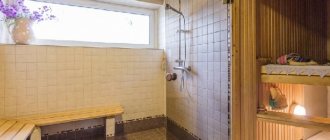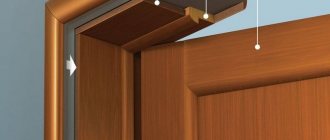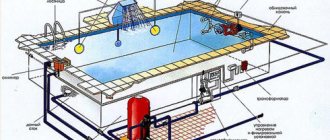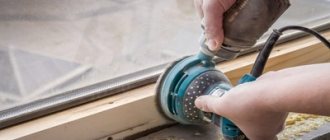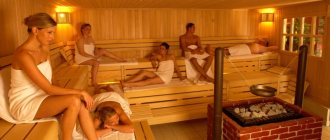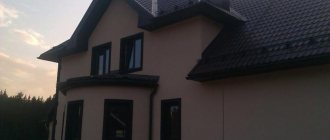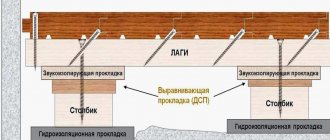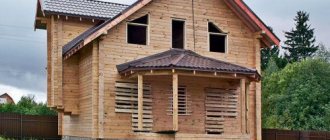05/17/2016 master
Today you can afford to have a swimming pool (large or small) at your dacha or in a private house. But with its appearance in the yard, the hassle becomes much greater and sometimes it even exceeds the pleasure you get from swimming in your pool. The most important problem here is the water temperature, because it does not always have time to warm up under the sun and become comfortable for swimming. In order to make the heating process more comfortable and faster, you need a solar collector for the pool.
Such a device is necessary for efficient heating of water in the pool. But it is quite expensive. Therefore, many people prefer to assemble it with their own hands. Our article today will tell you how to do everything correctly so that this water heating device works efficiently.
Let's talk about the collector
Solar collector or water heater is widely used today to heat water. In addition, they can also be used to heat houses. A special feature of such water heaters and collectors is that they use solar energy in their operation. This type of device is quite expensive, so many today are asking the question: “how to make it with your own hands to heat water?” Well, let's try to figure this issue out. We will start by finding out what designs of such devices exist at the moment. The design options for a solar collector for heating water differ from each other:
- cost of components;
- a list of materials and their quantity required to assemble the device with your own hands;
- assembly technologies.
Note! Each type of solar collector design works on the same principle, although different materials will be needed to assemble them.
Collector design option
By approaching the work correctly, you can build a solar water heater with your own hands, spending a minimum of money on it and using available materials. At the same time, many homemade solar collectors used for heating water do not differ in their technical characteristics from factory models, and sometimes even surpass them.
Purpose and types of water heaters for pools
All water heaters, depending on their purpose, are divided into indoor and outdoor. However, this classification is conditional. Some gas, wood and electric systems can also be used to heat water in a backyard pool. In the summer, you can use outdoor devices to increase the temperature in indoor tanks.
Depending on the type of design, water heaters are:
- flow-through;
- heat exchange;
- heat pumps.
Another classification is based on the type of energy used to raise the temperature of the water.
Water heaters are solar.
According to it, the following types of heaters are distinguished:
- gas;
- electrical;
- solar;
- thermal;
- fuel, etc.
What is the structure of the device
Heating a house or heating water (in the same pool) using a solar collector, which transforms solar energy into thermal energy, is the most optimal solution. This is a device that, unlike solar panels that create electricity, provides heating of the direct coolant material. This is why solar collectors are often used as devices for heating water or heating rooms. Today there are two types of similar water heaters: flat and vacuum. Let's look at the structure of a flat water heater. The flat collector for heating water has the following device:
Flat solar water heater
- protective glass;
- copper tubes;
- absorbent surface;
- coolant;
- thermal insulation;
- aluminum frame.
Now let's consider the vacuum model. Its heart is the vacuum tube. It is responsible for absorbing light, which is subsequently converted into heat.
Vacuum solar collector
The pipe itself consists of two glass tubes that are inserted into one another. In this case, their ends will be sealed and the air will be pumped out. The tube that is inside is necessary to absorb light. That's why it's painted black. The glass of the black pipe itself is made of special borosilicate.
Note! Borosilicate is used for the production of hobs installed in the kitchen. This material has high strength and toughness, which provides it with high resistance to cracks.
Vacuum manifold device
The tubes used in the vacuum manifold are perfectly protected from various damages. They are manufactured with a standard thickness of 1.8 mm. The heat pipe of the device transfers heat upward. It is an insulated box. It contains a collector pipe. The collector itself is necessary to remove heat from the tubes. Its body is made of aluminum, which plays into its favor when installing it during the DIY assembly process. It is sealed and prevents moisture from getting inside. Mineral wool is used here as insulation and thermal insulation. The frame is made of aluminum or stainless steel. The choice of material depends on weather conditions and the location of the collector.
Heating a pool with a heat pump
Heat pump heaters are a complex design in which water drawn from the pool passes through a filter system and then enters a pump. Inside it, it moves along a coil.
Air pumped from outside collides with the refrigerant, which leads to the formation of a large amount of condensate. This substance, under the influence of temperature differences, quickly turns into steam, and then is pumped into a compressor, where it is compressed to 20-25 atm. This process is accompanied by the release of heat. Such systems are compact.
What you will need for assembly
The most expensive design of a homemade solar collector for heating water is a device with a power of up to 2000 W. To assemble it, you will need the following materials:
- metal-plastic pipes;
- wooden box;
- frame. It will be used to secure a wooden box on it in the required position;
- black paint;
- protective surface. It is best to use glass.
Part of the required materials
Also, if you decide to make such a collector for heating water entirely with your own hands, then you will also need a small pump.
How to connect a solar collector to a tank (shower) by gravity
The weak point for summer solar collectors remains the need to use a pump. This dramatically increases the cost of the design or makes it completely unacceptable.
But you can make a heating tank connected to the solar collector so that the liquid moves by gravity. The principle of gravity flow is preserved - the heater is located lower than the storage tank (radiator).
According to this scheme, when using pipes from ¾ inches, water should move by gravity. The heated water from this tank can be drained into the pool.
Preparing for work
After you have collected all the materials that will be involved in assembling the water heating device, you need to decide on the choice of location. The solar collector must be installed near the pool. Note! Installing a homemade heater in close proximity to the pool will allow you to prevent unnecessary heat loss.
Water heater installation location
Preparing the site
In addition, you need to remember that for such a device it is necessary to create a certain level of inclination. In the situation with our solar device for heating the pool, its inclination angle should be no more than 50º. You will also need to prepare the assembly site of the unit accordingly. To do this, you need to build a compacted cushion of crushed stone, build a platform from paving slabs, or make a simple concrete screed.
When all the preparations are completed, we proceed to the actual construction of the water heater.
Electric pool heaters
Now the production of electric heaters of different power has been launched. They are equipped with a thermostat. Inside the plastic case there is a reservoir with an electric heating element. The liquid is pumped into the electric heater by a special pump. Upon contact with the heating element, the water temperature quickly rises. After this, the liquid is returned back to the pool. Such systems are often equipped with an automatic locking device, which is triggered when the water circulation process is disrupted and there is a risk of overheating and breakdown of the device.
Electric pool heaters are equipped with a thermostat.
Advantages and disadvantages
The advantages of electric water heaters include:
- Compactness. They are small in size, so they can be quickly moved if necessary.
- Easy to install. Installation of equipment does not require specific skills.
- Water purification. Almost all models are equipped with filters.
- Autonomy. The water heater maintains the temperature and does not require additional adjustment.
- Reliability. In such devices, the heating elements have a protective coating that protects them from oxidation.
Electric heaters also have some disadvantages. Often their power is not enough to significantly increase the temperature in large pools. Electrical components are well insulated, but it is better to take precautions and avoid contact with water to prevent electric shock. In addition, they have high energy consumption.
The working process
A solar collector for heating water for a swimming pool is constructed as follows:
- We lay the coil on the prepared site. To do this, we cut the timber and connect it with clamps and self-tapping screws;
- the resulting structure should be sheathed with plywood;
- after that we build the frame;
Note! Since the weight of the device will reach up to 30 kg, the entire frame should be made durable and able to easily withstand such a weight. Here you need to take into account the weight of glass, snow, water, the impact of wind on the structure, etc.
Frame for water heater
- after that we assemble the frame. It should be strengthened with anchors. With the help of such fasteners we secure the transverse bars to the frame. The frame is assembled according to the scheme that you have chosen for your solar water heater. The quality of water heating will not depend on the type of circuit;
- when the frame has been removed, the entire platform (and frame) should be painted black;
- We fix the platform to the frame using anchors. In this case, it is imperative to maintain the angle of inclination;
- Next, we mark the platform at the places where the pipes are installed. Here we install plastic fasteners. All structural elements must be painted black.
Note! For ease of painting, it is good to use a can of black paint or a spray bottle.
Installed platform with fastenings
After this, we connect the pump to the assembled structure. Here you need to choose a not very powerful pumping unit. This is due to the fact that water through the pipes must flow slowly in order to have time to warm up thoroughly. In this case, the pipes must lead directly into the pool. They should come out from the bottom of the pool. In order to avoid heat loss, it is necessary to install protective glass. A glass thickness of at least 4 mm is suitable. After this, we make a test connection to check the success and quality of the prefabricated solar panel structure for heating the water in the pool.
Finished water heater
Such a homemade unit using solar energy will cost you quite cheap. It can be successfully used to heat water during the entire warm period. When cold weather sets in, all water should be drained from the solar water heater unit to prevent it from freezing inside the pipes. If this is not done, the structural elements may be damaged, and you will no longer be able to use it next year.
Heat exchanger for swimming pool
The heat exchange heater has a cylindrical reservoir and a coil, the inlet and outlet of which are connected to the heating system. Water is taken from the pool and pumped into the tank. Here it is heated and released back into the pool under pressure. To regulate the heating process, such devices are equipped with a thermostat.
The pool heat exchanger has a cylindrical tank.
Advantages and disadvantages
The advantage of heat exchangers is low energy consumption, because Connection to the electrical network requires only a pump, which pumps water into the tank and pushes it back into the pool.
In addition, the positive aspects of the device include:
- high reliability;
- efficiency;
- unpretentiousness to operating conditions;
- long working life.
The main disadvantage of the system is the slow heating of a large volume of water.
Operation of the heat exchanger is possible only in the autumn-winter period, i.e. during the heating season.
Assembly Recommendations
For self-assembly of a solar water heater to go quickly and successfully, you must take into account the following recommendations from professionals:
- All equipment necessary for assembling a solar battery for heating water is not recommended to be placed on a level area. Here the pipes for return flow should be laid slightly higher than those pipes intended for direct water supply. As a result, you can avoid the unpleasant situation of air locks. Due to their appearance, the heating of water in the system slows down;
- For indoor pools, a solar water heater should be installed on the south side. In this case, the maximum permissible tilt angle should be 45 degrees;
- Using a vacuum manifold device, it can be placed on a flat roof at 15 degrees. Here you should focus on the height of the sun, and not on compass indicators. In such a situation, the water heater will play an additional role as thermal insulation;
Note! Placing the solar collector on the roof will protect its device from overheating.
Placing the device on the roof
- all elements in the unit must be tightly connected to each other to prevent leaks;
- the glasses are joined together with aluminum corners;
- special attention should be paid to the strength of the structure so that it can withstand not only the weight of the platform, but also the level of snow that will lie on it in the winter;
- pipes for the water heater should be chosen of high quality and durable so that they can last for a fairly long period of time;
- In order for a homemade structure to work for a long time, it is necessary to properly care for it.
Taking these recommendations into account, your homemade design will effectively heat water for many years.
User reviews from the Internet information space
In many user comments, the cornerstone in the operation of collectors is their direct dependence on solar activity. Orientation to the sunny side, angle of inclination and the presence of as many sunny days as possible are important components for the stable operation of a solar installation.
Users of prefabricated pools on the territory of a private house or cottage note the opportunity to lengthen the swimming season. It is recommended to use systems with flat collectors without separate heat exchangers. Pool water changes temperature by passing directly through the installation tubes. Such a system will be simple and low in price.
In northern territories with cold climates, flat-plate collectors practically do not receive good reviews. Despite their high cost, vacuum solar units are more widely used here. Due to low heat losses, they perform their functions better in heating pool water in cold latitudes.
Popular manufacturers of electric heaters
Some companies specializing in the production of swimming pools and equipment for them have already received a large number of positive reviews. When choosing a heater, it is recommended to pay attention to the products of the companies listed below.
Pahlen
Pahlen is a Swiss company that produces heaters with a power of up to 18 kW. The devices are capable of heating the temperature in the pool up to +40 °C and are characterized by a high degree of safety and reliability. The devices are equipped with overheating protection, which is triggered when the temperature rises to +60 °C. The most powerful devices in the line of this company require increased network voltage - 380 V.
Pahlen produces heaters with power up to 18 kW.
Bestway
Bestway is a joint American-Chinese production company specializing in the production of low-power heaters suitable for maintaining water temperature in small swimming pools. Energy consumption is only 3 kW.
The heaters are low-power, but with proper operation they can increase the water temperature in a small pool to +35 °C. Most models have a protected heating element installed that can increase the heating rate.
Budget devices do not have a thermostat, so you need to independently control the water temperature.
Intex
Intex is an American company that produces a large number of electric, solar, heat exchange and fuel heaters. The devices vary in power. Both high-quality stainless steel and durable plastic are used as the material for the internal tank and body.
Intex produces a large number of solar heaters.
The heaters of this company have a high degree of safety. They are often equipped with fuses against overheating and short circuits. In addition, most models have a thermostat, making it easier to control the temperature.
Electro
Elecro is an English company that produces electric heaters and heat exchangers for all types of swimming pools. The power of the devices ranges from 3 to 18 kW. Elecro heaters are made from durable materials and therefore have a long service life. The devices are economical. Most models can be mounted in both horizontal and vertical planes.
Classic shower design with a barrel and a solar collector with a plastic coil
All the methods of the considered homemade products are simple: in general, this is an insulated housing with tubes (metal, plastic), a barrel on the top of the cabin in direct sunlight and a circulation line. All other methods are modifications of the described design. Under ultraviolet light, plastic loses its strength and cracks, so a metal tank is also good. However, you can use any material, even a wooden barrel, as long as it does not dry out.
It is also not necessary to make a complex design for the water outlet, or to provide for the possibility of mixing it with cold liquid. You can get by with a simple flexible overlapping hose with a shower head. If the barrel is filled with a household pump, manually with buckets from a well, then there is also no need to build a pipeline to the supply tap (our example with it).
Assembly Features:
- Frame for the cabin: metal profiles, strips (even suitable from a landfill), PVC pipes, wood, any material from which you can build a stable structure. You can do without a frame, if there is somewhere to secure the barrel, but the place should be open on all sides, they will do , for example, unshaded roofs of extensions and other structures. As walls, you can use fabric drapery, opaque polyethylene.
- Barrel. The volume and material are chosen by the user at his own discretion, our case is 120 l, plastic.
- Water supply, piping: garden hose, plastic pipes (25 mm) with fittings, quick-release connections.
- Drainage: trench and pit.
Iron frames from old spring beds were used for the cabin. Welding was used. There are jumpers on the frame and a seat for a barrel on top.
Drainage is a hole at a distance from the shower with grooves that gradually deepen away from it. The depressions are filled with coarse crushed stone, gravel and construction waste.
Next, holes were made with a hand drill for the legs of the frame, which were installed in them and concreted (a bucket for each support).
The procedure for constructing a summer shower with illustrations
Preparation of elements: barrel, pipes, shower head, hose, float valve for water supply.
The supply will be carried out through a dedicated channel using a flexible hose (10 m ¾ inch). We also purchased 5 m of a tube thinner than ½ inch to separate the flows - to the shower tap and for filling.
First you need to make a flooring so as not to step on dirt while taking a shower. This element is treated with antiseptic impregnation and painted with yacht varnish.
We mark the barrel to correctly install the supply/fill line. On the east side, to the left of the entrance to the shower, there is a water inlet (for filling from the yard tap). There we will mark the place to drill a hole for a regular float valve from the toilet tank. We drill with a screwdriver and a step drill.
The valve (float) is inserted and secured with a nut. We install the faucet with the hole down, so the hose will not break. We use tow and Unipack sealing lubricant.
Next, we use quick-release connections to connect to the hose. You can also insert a thermometer into the barrel.
We install 2 fittings. First, we designate the filling level, cold water outlet (bottom), hot water inlet (top).
We cut 2 more fittings into the bottom - for the shower and for the drain, just in case. We attach a faucet to the first one. In our case, it has a tee with a valve for adding cold water. You can get by with a simpler design - one tap. We put a plug on the drain pipe. We attach a sinker to the supply hose.
The top of the barrel is covered with a lid, and several small holes are drilled there for “breathing.” The tank is filled with a yard tap through a flexible line. But you can also fill water in buckets, using a pump through the top without a separate line.
The barrel itself acts as a kind of solar collector, a thermos, heating up in the sun.
solar collector
A grid (coil) is assembled from ordinary plastic pipes (external diameter 20 mm) and fittings. Plugs are welded diagonally at the upper and lower ends. A manifold of 25–20–25 mm tees is welded on top and bottom.
The next stage is the body: a frame made of 50x50 mm timber with sides:
We make thermal insulation so that the captured solar heat is accumulated inside the box. We use extruded foil polystyrene foam 30 mm:
Marking for pipe holders and their installation:
We install the solar collector just below the barrel; a metal frame was built for the structure, but it can also be made simpler: from wood or simply fixed with support on a suitable surface.
Next are the important “little things”: glass, plexiglass or thick film for the box, transparent/translucent plastic, sealing with polyurethane foam. The latter measure is extremely desirable, since even a small hole can lead to critical heat loss. The lid is transparent so that the effect of the rays is enhanced: they get inside and once again heat the pipes by reflecting from the foil coating. The entire line is insulated with penofol.
This system provides heating up to +51° C. Natural circulation: water, heating up inside the collector, periodically splashes out of it into the barrel, is taken from the upper segment to the shower, and the cold layer is simultaneously forced out from below onto the coil.
Flaws
The reason for the relatively weak heating: the thermal conductivity of polypropylene (the coil is made from) is very low, comparable to expanded clay and wood, that is, it is better suited for insulation rather than heat transfer. If you use metal (especially blackened copper), including as the inner lining of the box, then the temperature can be raised to the boiling point in hot climates.
You can also replace polypropylene with corrugated stainless steel tubes, like those from a shower hose. Place duralumin plates inside as reflectors.
Advice: do not use a plastic valve with a float - it will crack, as it is not designed for warm water; use a brass design.
Possible knot variations
The barrel can be insulated with polyethylene and similar materials; if they are black, the efficiency will improve.
Faucet principle: If there is a cold water supply line, it can be used to both fill the tank and dilute the hot shower. That is, there must be power from a yard tap or another tank for cold water connected to a “hot” barrel.
Can I do it myself?
It is quite possible to assemble a pyramidal heater on your own . This will cost 2-3 times less than purchasing a similar model.
At the preliminary stage, the length of the pipe is calculated. With a diameter of 25 mm, one meter of pipe on a sunny day can heat up to 3.5 liters of water per hour. The pump is selected based on the fact that the coolant speed in the system should be 0.4-0.7 m/s.
Work progress:
- A frame in the form of a pyramid/herringbone is made of metal or wood.
- A black HDPE pipe laid in turns is attached to the frame with clamps (the pitch of the turns is 1-1.5 cm).
- Hoses are attached to the resulting equipment.
It is recommended to cover the structure with a pyramidal lid made of glass or UV-protected polycarbonate. The lid reduces heat loss and creates a greenhouse effect, accelerating the heating of water.
Models on the market, prices
Manufacturers of inflatable and frame pools produce a wide range of equipment and accessories for them, including devices for heating water using solar energy.
Intex Solar Mat
Flexible mat Solar Mat (28685) 120x120 cm for holding tanks with a filtration system . The circulation pump model is selected based on the number of mats in the solar system (from 1 to 5). Flexible manifold price: from 1800 rub.
Bestway
Flexible mat (art. 58423) 110-171 cm made of polyvinyl chloride. Connects to a cartridge or sand filter-pump of the pool. The heating area is 1.46 m2. Price: from 5000 rub.
Poolmagic
The range of heaters includes:
- Panel SP06305 (32396) . Flexible mat 305x60 cm made of polymer material. Price: from 7500 rub.
- Spiral 1500 (32394) . Pyramid heater made of polypropylene with a protective dome and base made of UV-stabilized polycarbonate. The diameter of the dome base is 58 cm. Price: from 8800 rubles.
- Poolmagic SSR (32308) . Pyramid model with a diameter of 59 cm and a height of 28 cm. Made of PVC, a protective transparent cover is provided. Price: from 12500 rub.
- Curve 3900 (32395) . Heater in the form of a rigid curved panel 110x69 cm on a support. It functions similarly to a mat, is made of HDPE and has a polycarbonate lid. Price: from 11,000 rub.
Azuro
The manufacturer produces flexible mats of different sizes:
- 300x120 cm (3EXX0162),
- 450x120 cm (3EXX0161),
- 300x60 cm (3EXX0159) and 600x60 cm (3EXX0158).
The price depends on the dimensions, the presence of a support and shut-off valve in the kit and ranges from 16,000 to 49,000 rubles.
Also:
- Shelter (3EXX0165) . A flexible mat 120x90 cm is installed on a support in the form of an arch. Price: from 15,000 rub.
- LUX 800 Supreme (3EXX0259) . Rigid curved panel 119x76 cm made of polymer material with protective glass and support. Price: from 14,000 rub.
- Pyramid Spiral (3EXX0052) . A pyramidal model with a base of 120x80 cm and a height of 40 cm, equipped with a protective dome made of polycarbonate. The cascade can include up to 4 heaters. Price: from 29,000 rub.
Kokido
Pyramid solar heaters from Kokido with a protective transparent dome Keops (K835CBX) (57x57x32 cm) and Keops II (K849WBX) (81x81x42 cm). The solar system can include up to 4 heaters. Price: from 11,000 rub.
Sunheater
Flexible solar heater from Sunheater (art. 30065) made of polymer material 600x60 mm. Price: from 18,000 rub.
